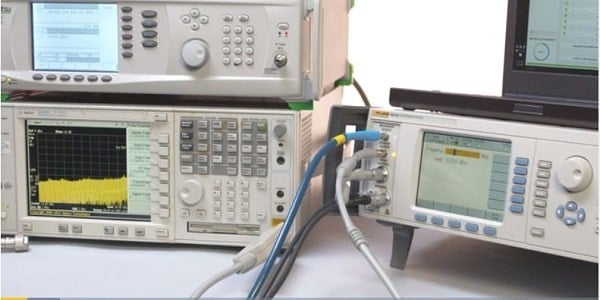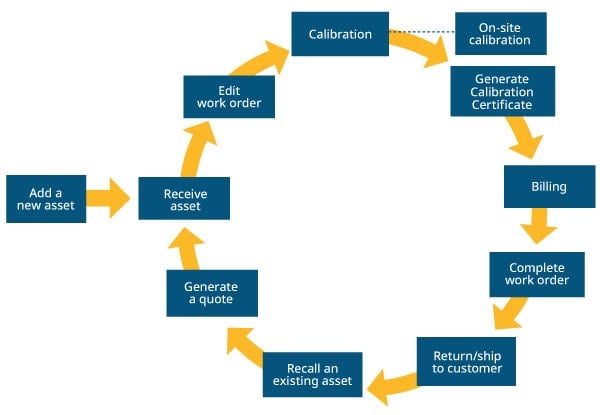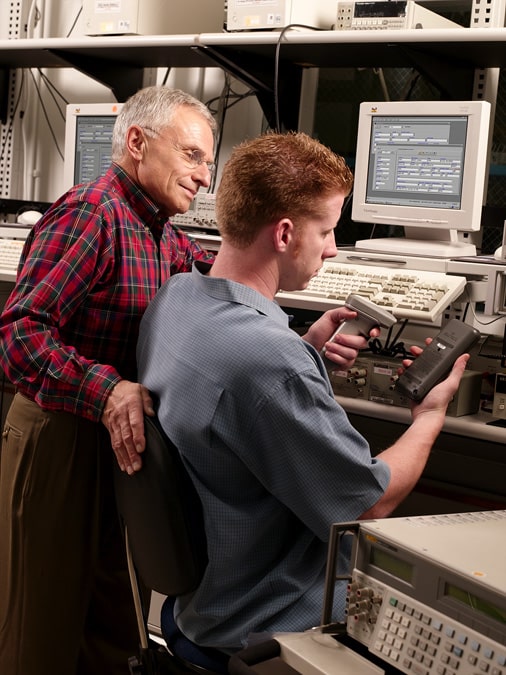- Other Fluke companies:
- Fluke
- Fluke Biomedical
- Fluke Networks
- Fluke Process Instruments
Three Expert Tips for Automating Your Lab with Calibration Automation Software

Investing in calibration automation software (also referred to as calibration management software) is a major undertaking for any laboratory. While many metrologists and lab managers see the potential benefits, there’s a steep learning curve and a litany of decisions to research along the way. Beyond the financial cost, cal labs must consider the investment of staff time in learning to use and configure the software, and questions about how best to integrate automation software into their calibration workflows.
Thankfully, by analyzing a few decision points as you consider implementing calibration automation software, you can be well on your way to finding the right solution for your laboratory. To help you plan your implementation and get the most out of your investment, here are my three tips for choosing the best calibration management or automation software for your lab.

Tip One: The more complex your calibrations, the more you’ll benefit from automating them.
Calibration management software for labs is an important component of a calibration LIMS (Laboratory Information Management System). At the heart of calibration lab software are procedures, the code or set of instructions that the software uses to run a calibration. There are many ways to automate the calibration process, and metrologists can see benefits at every level – for example, calculating measurement uncertainties and repeatable processes, even if the adjustments to the device must still be done manually – but particularly for reducing complexity.
In metrology, complexity generally refers to the time the calibration takes if performed manually. More complex calibrations take more time, and they leave more possibility for user error. Automating lab calibrations with the best calibration management software not only improves calibration time by speeding up processes that would have taken a user a long time to do manually, but also bench time, because technicians no longer need to monitor a calibration for the entire duration, freeing them up for additional calibrations or other tasks around the lab.
I think back to one example, a customer who was spending eight to twelve hours for a single type of RF calibration. When I showed him that by automating this process he could reduce that time to 45 minutes, he was astonished. He was able to get his calibration staff off the bench and increase the lab’s throughput at the same time. So, the rule of thumb is, the more complex your calibration tasks, the more automation software can help you.

Tip Two: Budget Time to Really Learn Your Calibration Software Workflows
The more effort you put in early on to learn to use your new automation software, the more you’ll realize the ways it will save you time and reduce your errors. During your implementation phase, it’s key to:
- Engage the software help files and documentation
- Allow staff time to focus on learning the software
- Take advantage of on-site or virtual training courses
One of the most common pitfalls I see when calibration labs implement software is that they don’t take time to practice. While you’re migrating to a new platform or process, work in the old system and the new system side-by-side. Taking the time to see how work gets done in one system and comparing it to the other reaps benefits.
For that reason, I recommend a four-to-one ratio of calibrations in your old and new workflows. For every four calibrations you perform manually or in your old workflow, perform one in your new automated calibration workflow, for three weeks. Taking the time to do this is a great way to make any calibration management software work better.
Another advantage of learning software this way is that it can often be done free of cost. You can try a demo of MET/CAL for 60 days, with every feature enabled, and access to our customer success staff. Taking advantage of the free calibration software demo by working side-by-side in your current workflow, reading documentation, and utilizing support will have you up and running with calibration automation software by the time you make a financial investment.
Featured Calibration Software Products
MET/CAL® Calibration Management Software
MET/TEAM® Test Equipment Asset Management Software
MET/TEMP II Temperature Calibration Software v5.0

Tip Three: Implement Calibration Automation Software to Preserve Knowledge and Skills in Your Lab
The fact is, we’re facing the loss of a lot of institutional knowledge in the calibration industry – perhaps to a greater extent than many realize. People coming in may not have specialized calibration training. It’s a good idea to automate now so that those stepping into roles in the lab can pick up the work right away, shortening the training curve.
Learning automation software has benefits not only to the calibration lab, which preserves its knowledge and experience in software procedures, but also to the technicians doing the work. The skills that develop as a result of learning software and creating procedures is highly valued, and very transferrable. If a technician knows how to create and customize procedures in MET/CAL, for example, they will immediately see a return on their investment.
Would you like to know even more about how to automate calibration for your lab, creating procedures, or training and learning opportunities? You can reach me by phone at 877-355-3224 or email at insidesales@flukecal.com. We also have extensive free online learning resources, including our brand-new Education Hub, filled with content you and your staff can consume at home, as well as live and on-demand webinars. And as always, subscribe to our email list for the latest updates and how-to articles.
- Home
- Products
- New Products
- Electrical Calibration
- RF Calibration
- Data Acquisition and Test Equipment
- Temperature Calibration
- Humidity Calibration
- Pressure Calibration
- Flow Calibration
- Process Calibration Tools
- Calibration Software
- Service and Support
- All Calibration Instruments
- Purchase Info
- News
- Training and Events
- Literature and Education
- Service and Support
- About Us

